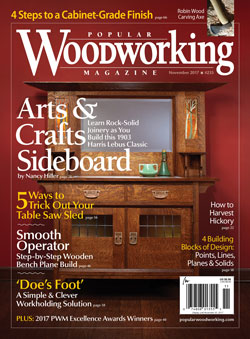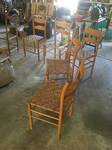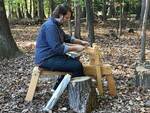We may receive a commission when you use our affiliate links. However, this does not impact our recommendations.
The November 2017 issue of Popular Woodworking Magazine features a reproduction of a sideboard made in 1903 by the English furniture manufacturing company Harris Lebus. I built this sideboard based on drawings I’d made in 2007 from measurements of an original owned by some acquaintances. Having had a chance to visit that same original sideboard recently, I thought readers would be interested in gaining further insights and seeing details of how it was made; while it was built in a factory, not the kind of small workshop run by Sidney Barnsley or Ernest Gimson, it was made to a higher standard than many factory-made wares of its time.
When I first saw the sideboard, its then-owner, Russ Herndon, believed it had been made for Liberty. He’d acquired the piece from a dealer in southern Indiana who bought English antiques by the container-load. There was no recognizable maker’s mark. My interest in the piece sparked Russ’s curiosity, and it wasn’t long before he’d made his own inquiries, based on which he sent me a link to an auction house catalog in which the same basic sideboard appeared:
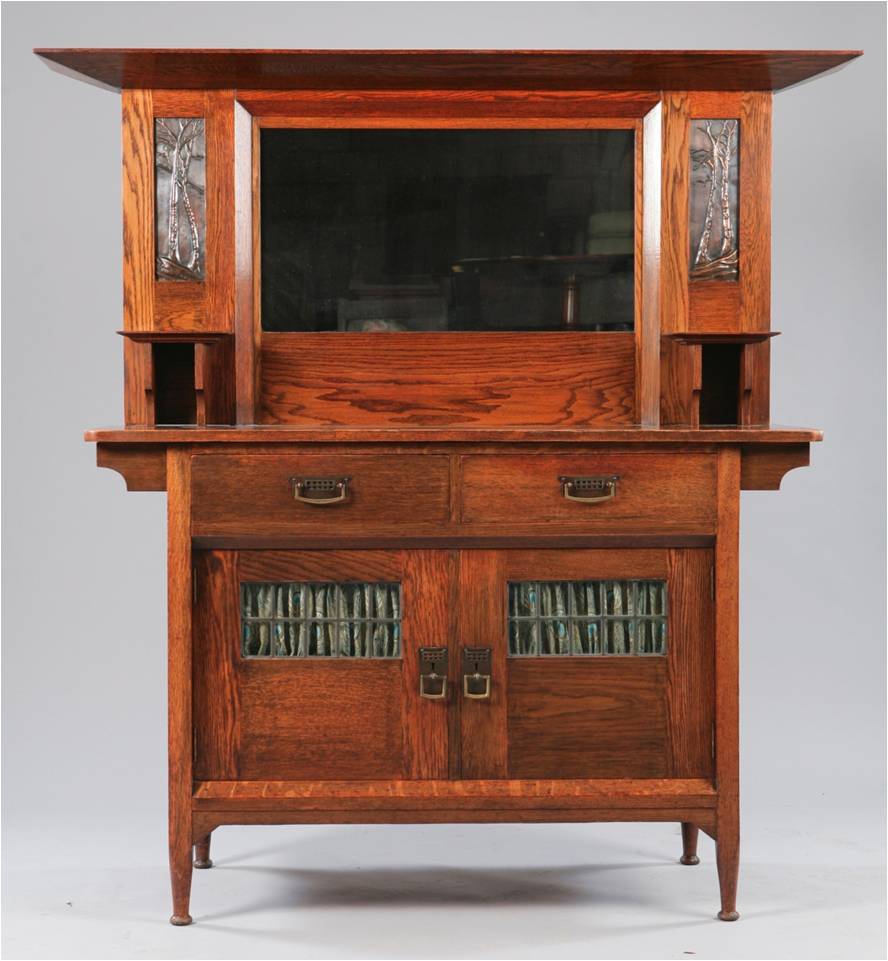
The 2007 catalog listing for the piece above reads: “An Arts and Crafts oak mirror-back sideboard by Harris Lebus, Finsbury Cabinet Works having an inward sloping cornice above a rectangular mirror plate, flanked by inset copper panels depicting leafless trees (stamped RD 404961) with candle shelves below. The lower stage having a rectangular top above two short drawers with pierced brass back plates and bale handles above two cupboard doors with leaded glass panels (drawers and doors stamped Rd No. 404973 Reg. 10th February 1903) raised on tapering legs and ring turned feet. 57 cm x 138 cm x 168 cm high. 500-800 Pounds.” Curtains conceal the contents of the leaded-glass doors.
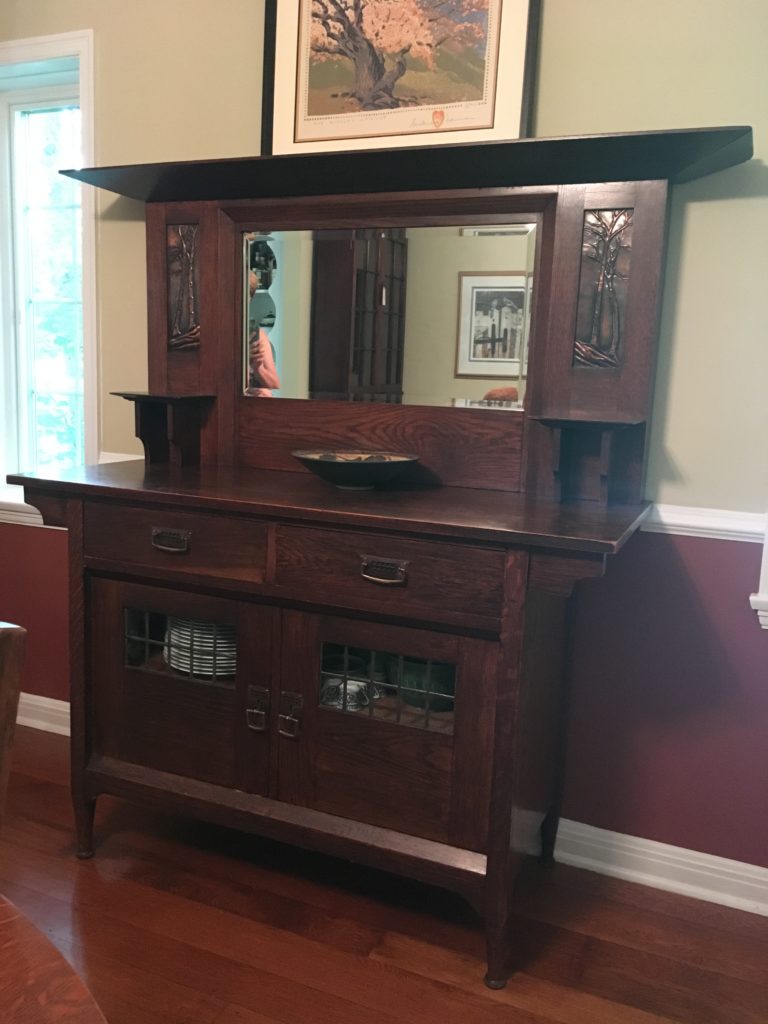
This is the original sideboard I measured in 2007. It is in effect identical to the one in the catalog listing above. Several years ago this sideboard was sold to new owners, who kindly allowed me to visit it and take photographs related to the forthcoming Popular Woodworking book on English Arts & Crafts furniture (scheduled for publication in June 2018). The leaded-glass doors still have their lovely brass curtain rods on the interior.
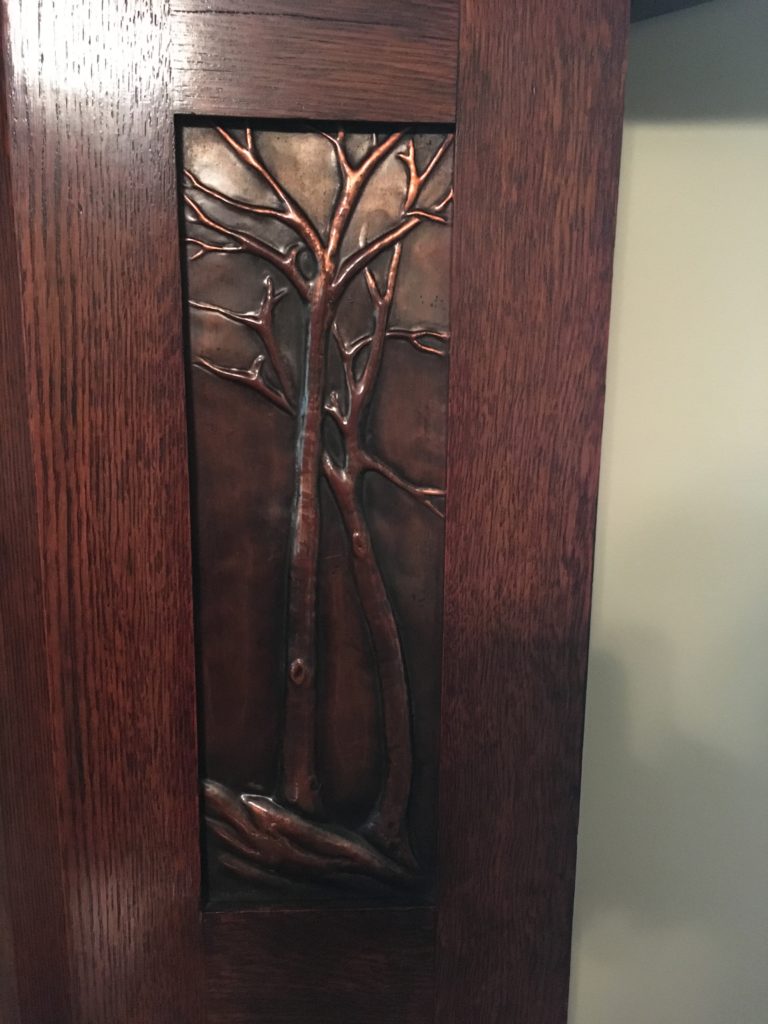
Hammered copper panels depict the leafless trees specified in the catalog description. I did not have a handy source for beaten copper, but I knew I could count on artist Anne Ryan Miller to create gorgeous equivalents in glass.
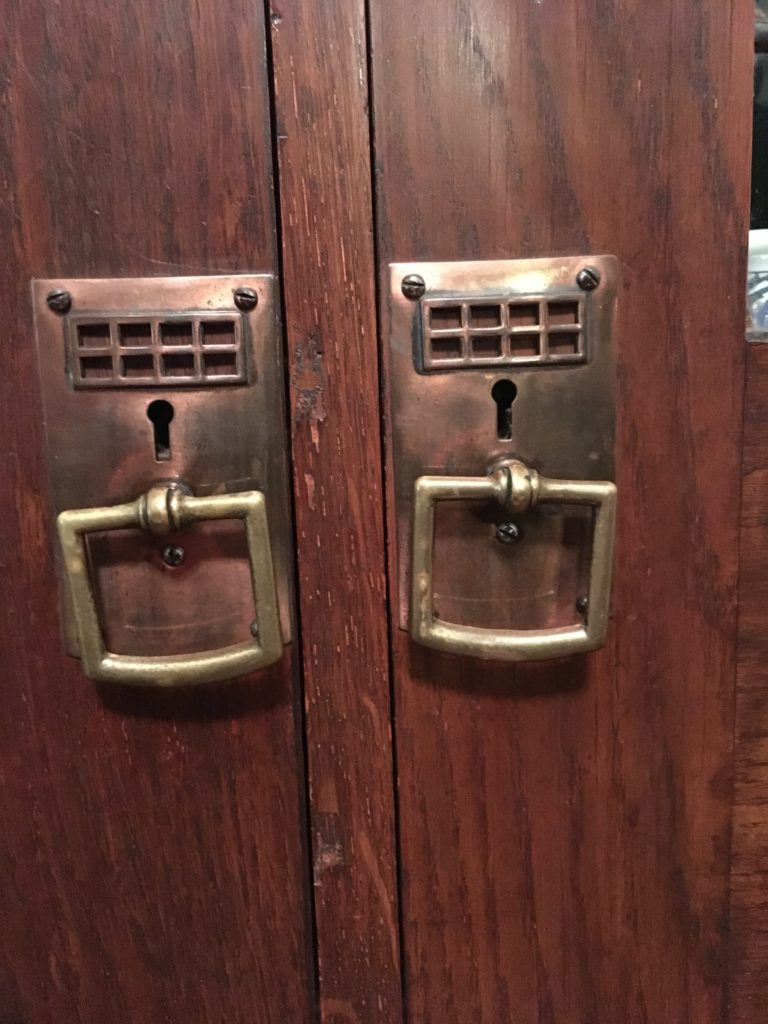
The original door pulls. I had pulls fabricated by metal sculptor Adam Nahas.

Original drawer pull
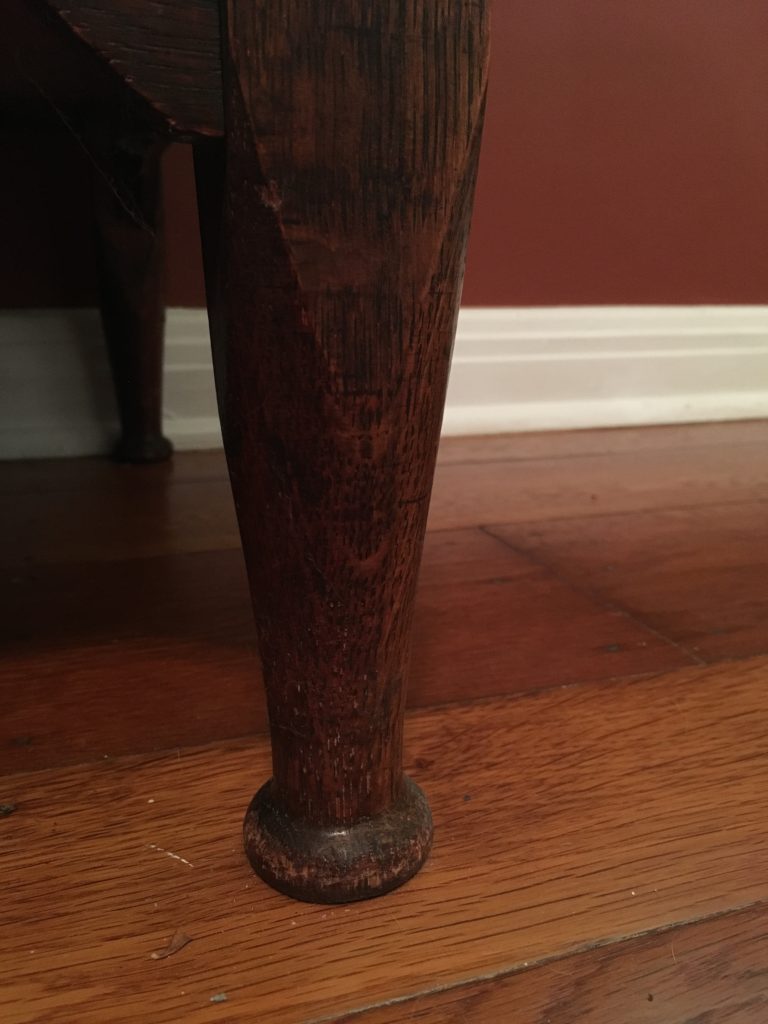
I was taken aback by how different (well, relatively speaking) the original ring-turned feet are from how I had interpreted them based on my 2007 measurements. These are a bit chunkier and not as rounded at the base.
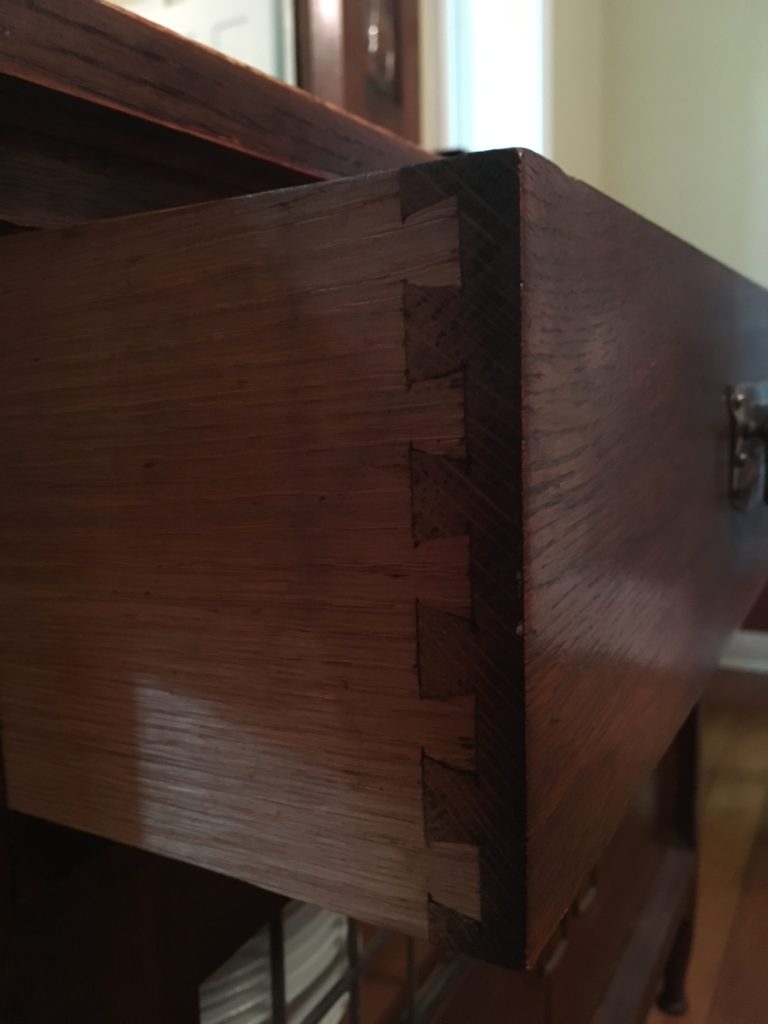
The original sideboard has machine-dovetailed drawers that slide on wooden runners.
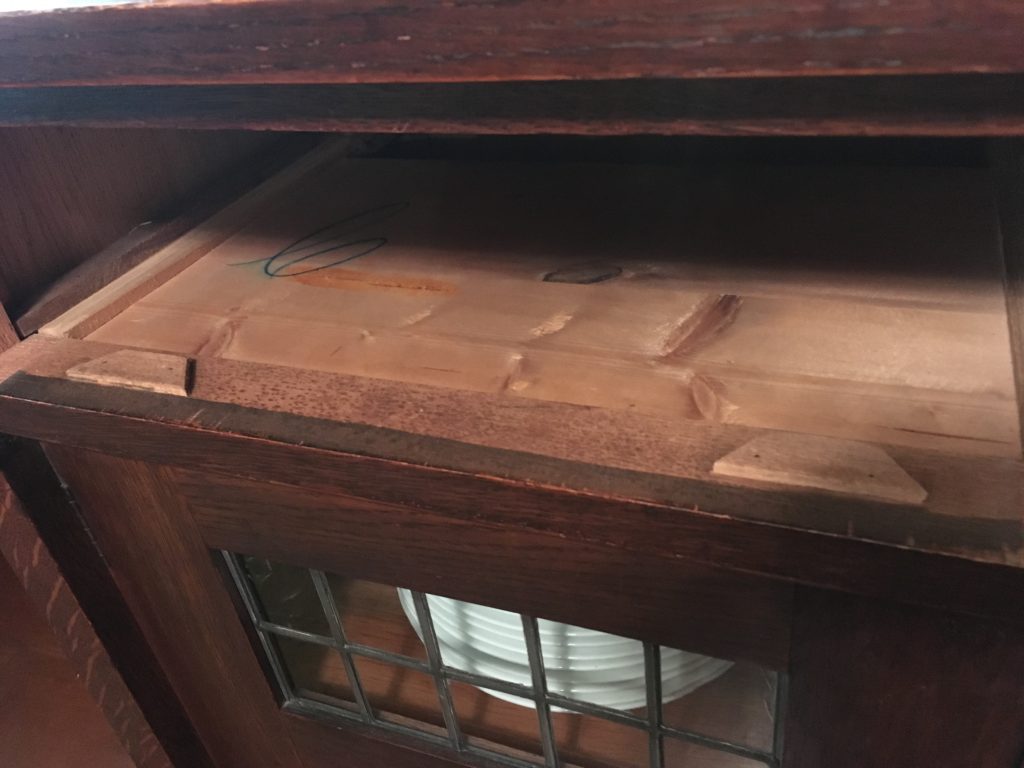
The wooden runners are grooved and fitted with dustboards made of pine.
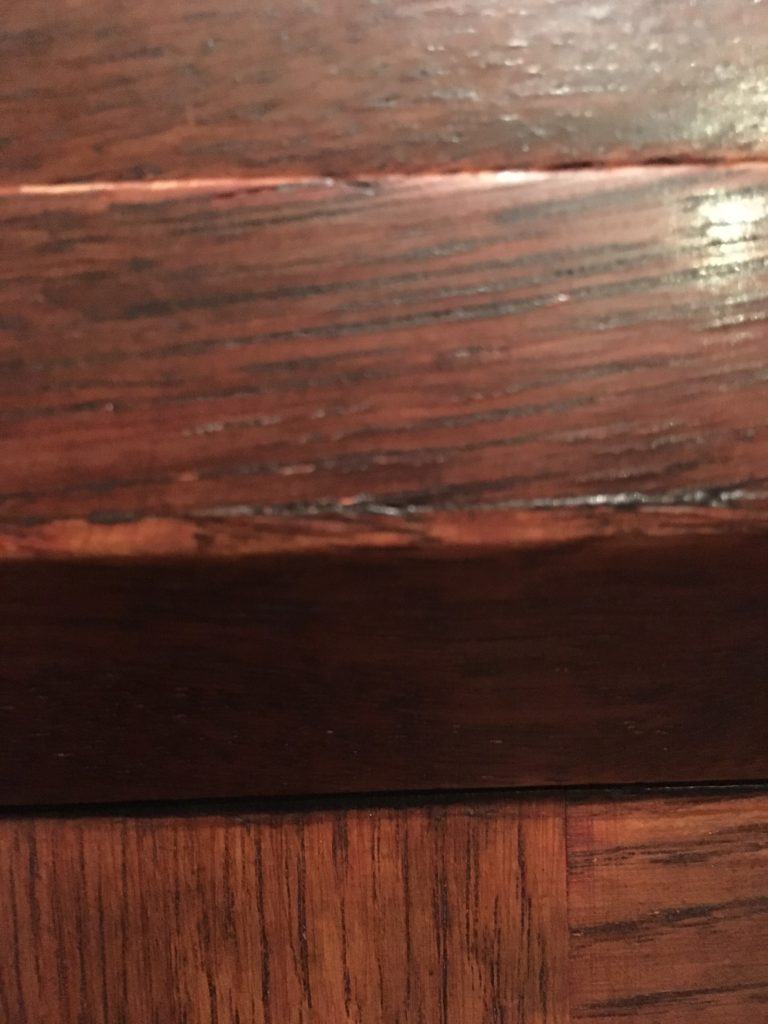
Here (with apologies for the out of focus upper section of the image) you can see that the original builders added the beveled trim to the rail below the drawers, a detail replicated in the reproduction published by Popular Woodworking.
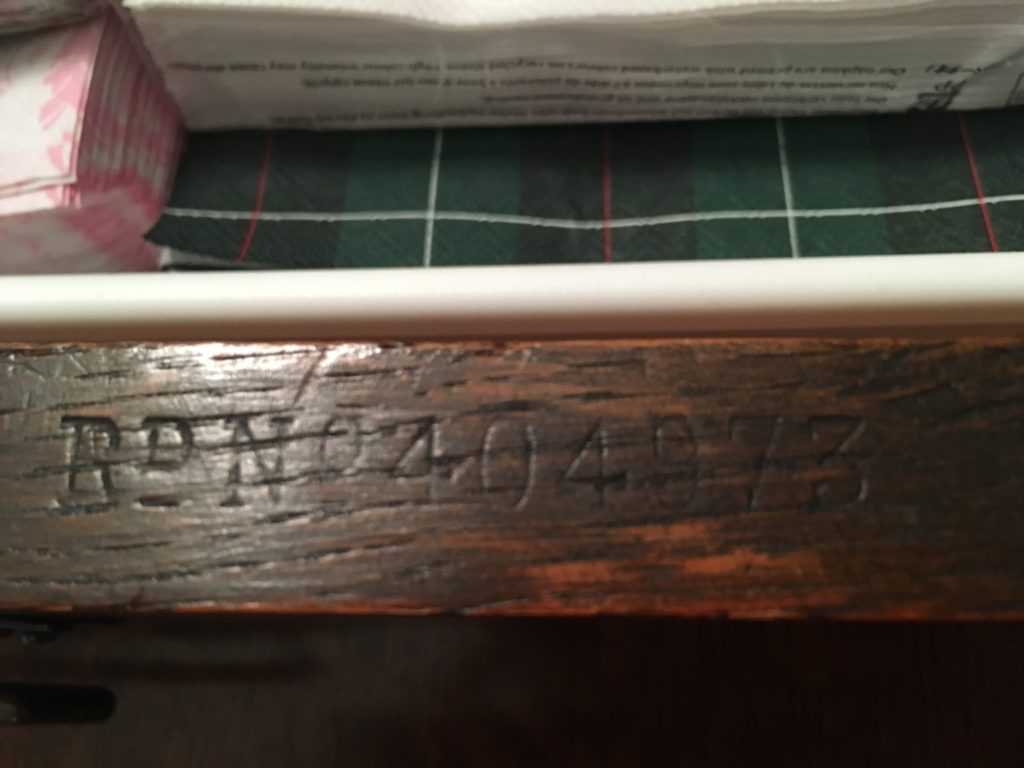
The registration stamp on the original sideboard in Bloomington
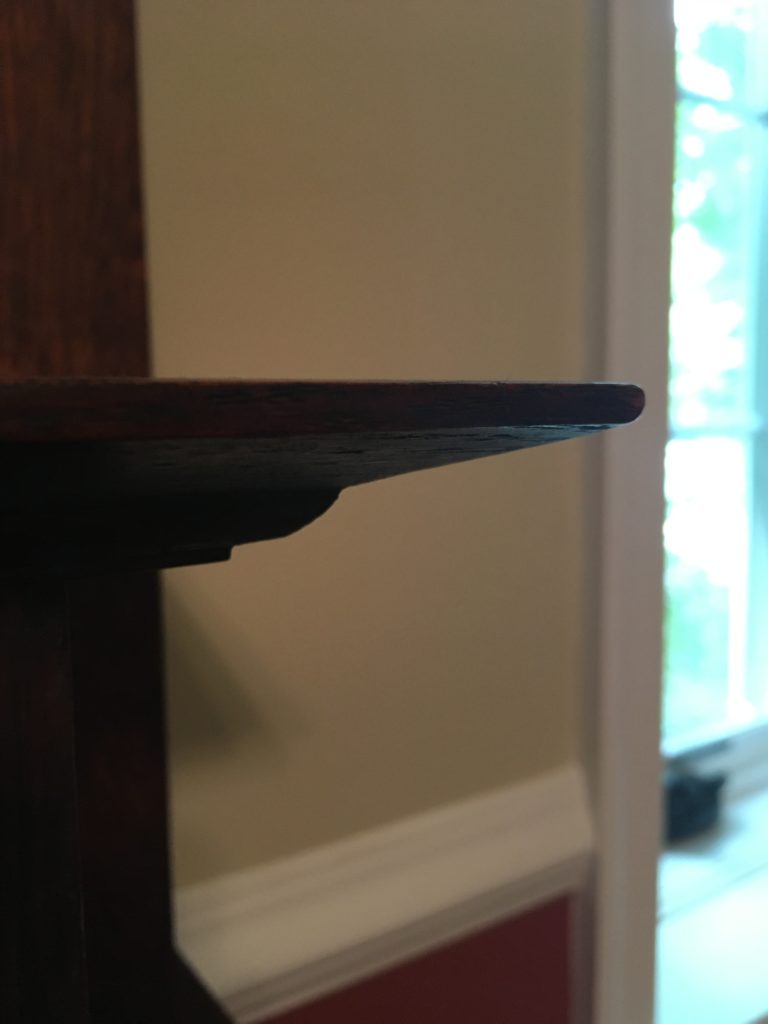
Candle shelf edge profile
One of the interesting things I found in the course of my research is that Lebus produced a broad range of variations on this basic sideboard design. This is not unusual in the world of furniture manufacturing; variations on a basic pattern allow a manufacturer to appeal to a broader market while using standard components produced in high numbers.
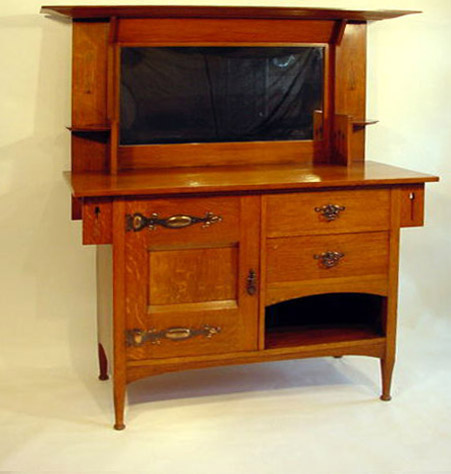
The sideboard here is clearly related to the 1903 version but has some notable differences. The ring-turned feet are still present, along with the essential form. But this version appears to be suffering an identity crisis — it can’t decide whether it wants to be modern or Gothic. Those decorative strap hinges allude to medieval times (albeit with a Victorian inflection), but many other elements — the brackets supporting the cornice and top overhangs, the uprights for the candle shelves, the general lack of symmetry — evoke more modern associations. By “modern” in this case, I’m referring to the original “modernism,” that of the 1920s and ’30s.
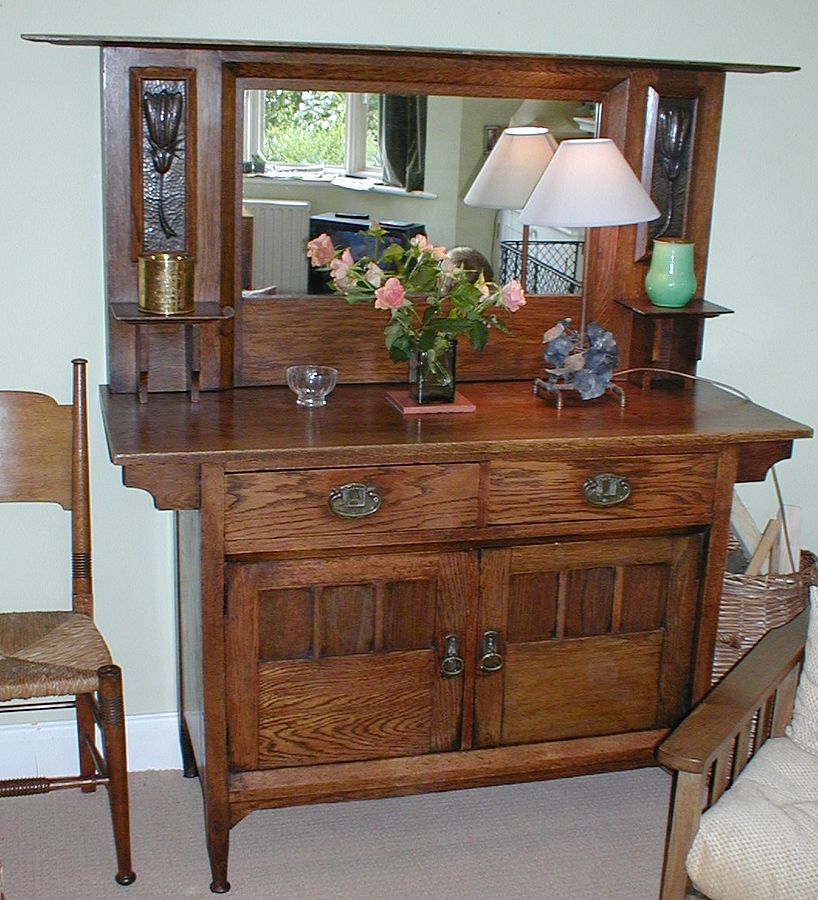
Another variation on the theme has panels in the doors and decidedly more Victorian-style hardware, as well as a flatter cornice.
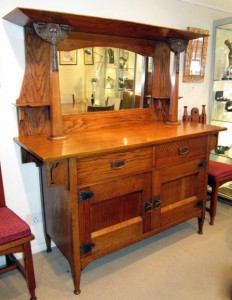
And yet another, this one also clearly suffering an identity crisis.
Here are some supplies and tools we find essential in our everyday work around the shop. We may receive a commission from sales referred by our links; however, we have carefully selected these products for their usefulness and quality.



